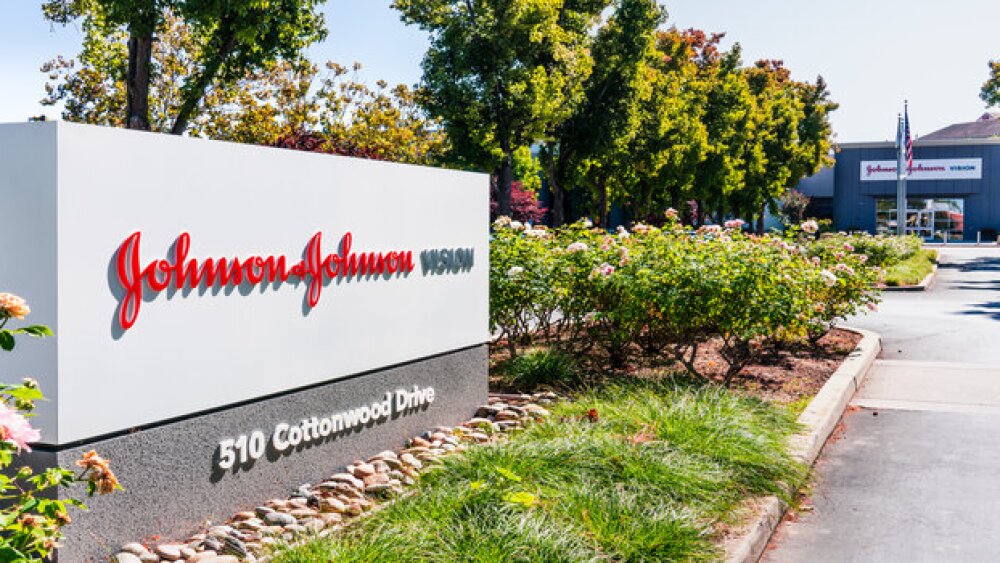Jefferies analysts called the proxy filing, which is a standard disclosure after a merger agreement, “much more intriguing than normal” given the regulatory turmoil it revealed.
It’s not every day that an FDA regulator makes an appearance in the standard disclosure documents outlining the background of a biopharma deal. But by all accounts, Peter Marks, the former director of the Center for Biologics Evaluation and Research, wasn’t just any regulator.
Marks’ resignation was noted as a moment of clarity for Verve Therapeutics as it considered a deal with Eli Lilly in March. President Donald Trump’s tariffs, too, factored into the tumultuous deal negotiations in the lead up to Verve agreeing to be acquired for $1.3 billion, according to SEC documents posted Wednesday.
Jefferies called the post-merger proxy filing “much more intriguing than normal” given the turmoil it revealed. The firm said the chatter underscores the challenging environment facing companies in the gene editing space.
The Art of the Deal
The story began in June 2023, when Verve and Lilly entered a five-year agreement for a cardiovascular gene editing program. Lilly made a $60 million investment in Verve at the time and later increased its interest by buying out certain product rights for programs in PCSK9 and ANGPTL3 from Beam Therapeutics. That company owns the intellectual property for base editing and has licensed it solely to Verve. Through this initial deal, Lilly also secured an opt-in right on the atherosclerotic cardiovascular disease (ASCVD) gene editing therapy VERVE-102, with a decision to be made by the end of 2025.
The clinical development relationship proceeded from there until November 2024, when Lilly approached Verve CEO Sekar Kathiresan expressing interest in an acquisition. No offer was made at that time.
A month later, Verve’s board met with advisors to discuss long-term projections for the company’s future. At that time, the board noted that assumptions in the forecast for commercialization of Verve’s future products appeared “overly optimistic.” The board decided to engage with Lilly to pursue a transaction but also consider seeking other interested parties, among other potential paths forward.
Verve was due to release critical data from the Phase Ib Heart-1 trial for VERVE-102 in April that the board believed could spur a stock increase. In March, Verve began confidentially sharing what data was available from the study with Lilly.
On March 28, Lilly phoned Verve and expressed a desire to buy the biotech and indicated that an official offer would be submitted the following week.
Then the Marks bombshell dropped. The popular regulator resigned after being given a choice to do so or be fired. Analysts said the decision was biotech’s “worst fear” come true.
Concerns exploded across the industry that his departure would mean delays to drug candidate approvals and “potentially a more negative regulatory outlook of gene editing products,” the Verve proxy states. The S&P Biotech ETX (XBI) fell 7% in 24 hours and Verve’s own stock price declined 21% to $4.14 per share.
News began to trickle out of further dramatic cuts to staffing at the FDA and “a potential shift in the regulatory landscape for product candidates based on CRISPR.” Verve said that the upheaval at the FDA could lead to development delays for gene editing products such as its own.
Lilly’s offer arrived days later on April 1: $10 per share plus a contingent value right of $3 to be paid when the first patient was dosed in a Phase III trial of VERVE-102 for ASCVD. Given the pending Heart-1 data and other factors, Verve rejected this initial offer.
Then another policy bomb dropped. President Donald Trump announced numerous tariff measures on countries around the world, sending the global markets into turmoil and further stressing biotechs like Verve—which saw an 18% share decline to $3.41 on April 9.
In early May, Verve’s board revised its commercial projections, determining that capital of between $1.5 billion and $2 billion would be needed to support all of the biotech’s candidates through initial launch. The board noted that few companies of Verve’s size had successfully raised that kind of cash in this environment, which in addition to the regulatory disruption had been characterized by macroeconomic challenges, drug pricing pressures and the uncertainty of coverage for “one-and-done” treatments like gene editing.
Later that month, Lilly promised to revise its proposal but said the earlier offer represented the “top end of the valuation range” for Verve. Lilly stated that “recent external developments at the FDA” and in the U.S. government more broadly had created uncertainty around its own forecasts for some gene editing therapies.
Verve directed its advisors to seek out other interested parties at this time. Several agreed to meet with Verve but ultimately none made an offer.
The president’s policy initiatives again crashed Verve’s plans in mid-May when Trump announced his plan to tie U.S. prescription drug prices to the prices paid in other countries, referred to as the Most Favored Nation rule. The XBI fell 2% and Verve dropped 4% on this news.
On May 14, Lilly revised its proposal, keeping the upfront at $10 but boosting the CVR to $5 total. The CVR was split between the Phase II milestone, FDA approval and reaching $1 billion in sales. After much discussion about the uncertainty of the markets and the future of gene editing, Verve submitted a counter proposal of $10.50 upfront and a $3 CVR for the Phase III milestone.
Lilly agreed to the counter proposal on May 23, and after much back and forth, the deal was announced June 17.






